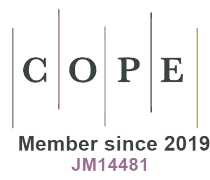Russia in the process of constructing regional structures in Southeast Asia
DOI:
https://doi.org/10.18778/1427-9657.10.02Słowa kluczowe:
international relations, regionalism, Russia, the region of Southeast Asia, ASEANAbstrakt
The article aims to show the integration processes in Southeast Asia, with regard to the participation of Russia, and to determine the reason why Russia takes part in them. Based on the demonstration of the international process, two theses have been proven: (1) The project of establishing a Greater Eurasia with the participation of the Eurasian Economic Union (EAEU), the Shanghai Cooperation Organisation (SCO) and ASEAN is a grandiose and strategic goal for Russia. The project is supposed to recall the traditional policy conducted by Russia, consisting of it playing the role of a bridge between Asia and Europe drawing China’s attention to this alternative proposal to the Chinese concept of the Belt and Road Initiative. (2) Russia is a player in the geopolitical game in Southeast Asia, even though it is perceived as the closest ally of China. Under the circumstances, where the relations with the EU have been destabilised, it is in the interest of Russia to further the integration and stabilisation of the region with its more active participation. Russia’s more active participation in regional integration is hampered by its low level of economic cooperation with countries in the region and its image: the activities of Russia are still perceived through the prism of the actions and interests of China, its strategic ally both on a regional as well as global scale.
Bibliografia
About the ASEAN Defence Ministers’ Meeting Plus, https://admm.asean.org/index.php/about-admm/about-admm-plus.html (accessed 20.10.2019).
Google Scholar
Braterskiy, M.V., Suslov, D.V. 2014. Vozvrashcheniye SSHA na Tikhiy Okean. Politika SSHA v ATR: Sb nauchnykh trudov. Moscow: RAN. INION.
Google Scholar
Chen, Yu. Some countries fear the Eurasian Silk Road Economic Belt, http://eurasian-studies.org/archives/3549 (accessed 15.12.2019).
Google Scholar
Cheng-Chwee, K. 2008. The Essence of Hedging: Malaysia and Singapore’s Response to a Rising China. Contemporary Southeast Asia A Journal of International and Strategic Affairs 30(2), pp. 159–185. https://doi.org/10.1355/CS30-2A
Google Scholar
DOI: https://doi.org/10.1355/CS30-2A
Concept Paper on Proposed Network of ASEAN-Russia Think-Tanks (NARTT), http://asean.org/storage/2017/08/Concept-Paper-on-the-Proposed-Network-of-ASEAN-Russia-Think-Tanks-Fina....pdf (accessed 20.09.2018).
Google Scholar
Czaputowicz, J. 2014. Mapa współczesnego realizmu: realizm klasyczny, neorealizm, realizm neoklasyczny. In: Teoria realizmu w nauce o stosunkach międzynarodowych. Warszawa: Rambler Publishing House, pp. 25–41.
Google Scholar
Davydov, O.V. 1998. Russia’s foreign policy in transformation prospects and challenges in the Asia Pacific region. Asian Perspective 22(1), pp. 53–69.
Google Scholar
Diesen, G. 2017. Russia’s Geoeconomic Strategy for a Greater Eurasia. London, New York: Routledge.
Google Scholar
DOI: https://doi.org/10.4324/9781315212227
Fenby, J. 2009. Chiny Upadek i narodzony wielkiej potęgi. Kraków: Znak Publishing House.
Google Scholar
Goh, E. 2011. Institutions and the great Power bargain. In. East Asia: ASEAN’s limited „brokerage” role. International Relations of the Asia-Pacific 11, pp. 373–401. https://doi.org/10.1093/irap/lcr014
Google Scholar
DOI: https://doi.org/10.1093/irap/lcr014
Ignatov, A. 2012. Russia In the Asia-Pacific. In: R. Azizian, A. Lukin (eds.). From APEC 2011 to APEC 2012: America and Russian perspectives on Asia-Pacific security and cooperation. Honolulu: Asia-Pacific Center for Security, pp. 13–17.
Google Scholar
Joint Statement of the 3rd ASEAN-Russian Federation Summit on Strategic Partnership, https://asean.org/storage/2018/11/ASEAN-Russia-Joint-Statement.pdf (accessed 10.02.2019).
Google Scholar
Korolev, A. Russia in the South China Sea: Balancing and Hedging, https://doi.org/10.1093/fpa/orx015
Google Scholar
DOI: https://doi.org/10.1093/fpa/orx015
Lukin A.V. 2018. Rossiysko-Kitayskoye sblizheniye i struktura mezhunarodnykh otnoshenii. In: Novyye mezhdunarodnyye otnosheniya Osnovnyye tendentsii i vyzovy dlya Rossii. Moskva: Mezhdunarodnyye Otnosheniya.
Google Scholar
Luzyanin, S. Greater Eurasia: the Common Challenges for China and Russia, http://valdaiclub.com/a/highlights/greater-eurasia-the-common-challenges/ (accessed 15.12.2019).
Google Scholar
Podpisan ukaz po realizatsii vneshne politicheskogo Kursa, http://news.kremlin.ru/acts/15256/ (accessed 3.02.2014).
Google Scholar
President Xi Jinping proposes to build a Silk Road Economic Belt with Central Asian countries, http://www.china.org.cn/travel/revitalize_the_silk_road_in_Shaanxi/2013-11/01/content_30468580.htm (accessed 25.02.2019).
Google Scholar
Severino, R.C. 2007. Russia, ASEAN and the East Asia. In: G. Chufrin, M. Hong (eds.). Russia-ASEAN Relations New Directions. ISEAS, IMEMO, pp. 406–423.
Google Scholar
Sinienko, I.Yu. 2016. Prospects of “Eastern Pivot” in frames of current geopolitical position of Russia in the Northeast Asia. Ojkumena 2, pp. 89–104.
Google Scholar
Sochi Declaration, https://www.asean.org/storage/2016/05/Sochi-Declaration-of-the-ASEAN-Russia-Commemorative-Summit-Final.pdf (accessed 25.02.2018).
Google Scholar
Soveshchaniye c chlenami Soveta Bezopasnosti, https://www.kremlin.ru/news17520 (accessed 3.02.2014).
Google Scholar
Timofeev, I., Lissovolik, Y., Filippova, L., 2017. Russia’s Vision of the Belt and Road Initiative: From the Rivalry of the Great Powers to Forging a New Cooperation Model in Eurasia. China &World Economy 25(5), pp. 62–77. https://doi.org/10.1111/cwe.12214
Google Scholar
DOI: https://doi.org/10.1111/cwe.12214
Tsvetov, A. Russia’s Asian Trade game, https://thediplomat.com/2017/02/russias-asian-trade-game/ (accessed 10.02.2019).
Google Scholar
Voronin, A.S. 2010. Rossiya-ASEAN: k otnosheniyam razvitogo ivseob’yemlyushchego portnerstva otnoshenija rozvitogo i vsieobemlushchego partnierstwa, In: ASEAN v nachale XXI veka. Moskva: Forum, pp. 309–338.
Google Scholar
“Wielka Euroazja”. Na drodze do wspólnej przyszłości. PAP, https://pap-mediaroom.pl/inne/wielka-eurazja-na-drodze-do-wspolnej-przyszlosci (accessed 10.02.2019).
Google Scholar
Żołądkiewicz, K. 2016. Wszechstronne Regionalne Partnerstwo Ekonomiczne (RCEP) jako przykład nowego trendu w regionalizmie. Finanse. Rynki Finansowe. Ubezpieczenia. Problemy współczesnej gospodarki światowej 3(81), pp. 335–344. https://doi.org/10.18276/frfu.2016.81-29
Google Scholar
DOI: https://doi.org/10.18276/frfu.2016.81-29
Pobrania
Opublikowane
Jak cytować
Numer
Dział
Licencja

Utwór dostępny jest na licencji Creative Commons Uznanie autorstwa – Użycie niekomercyjne – Bez utworów zależnych 4.0 Międzynarodowe.










